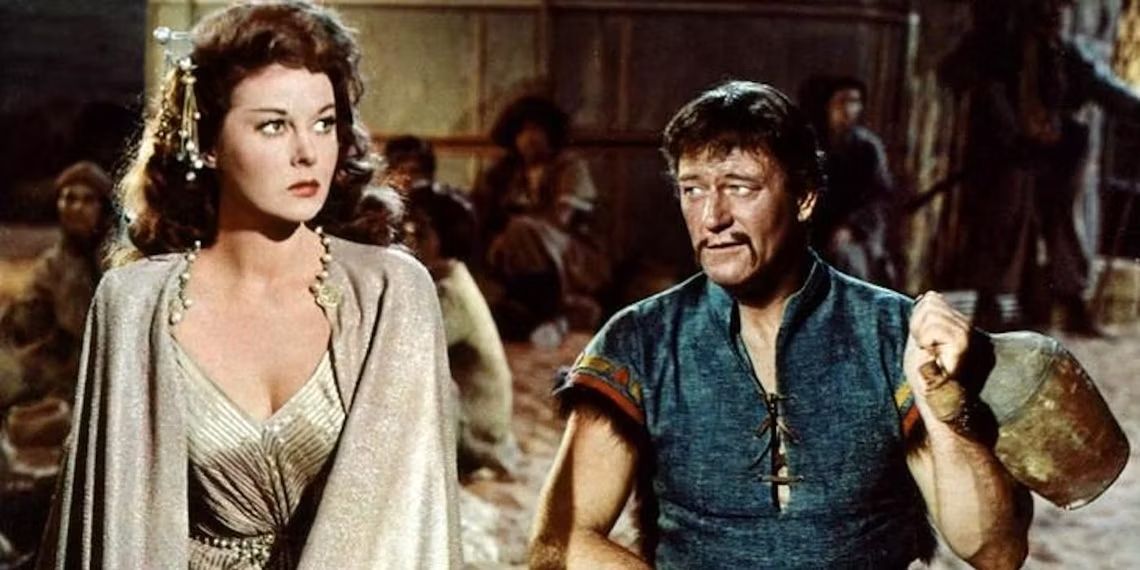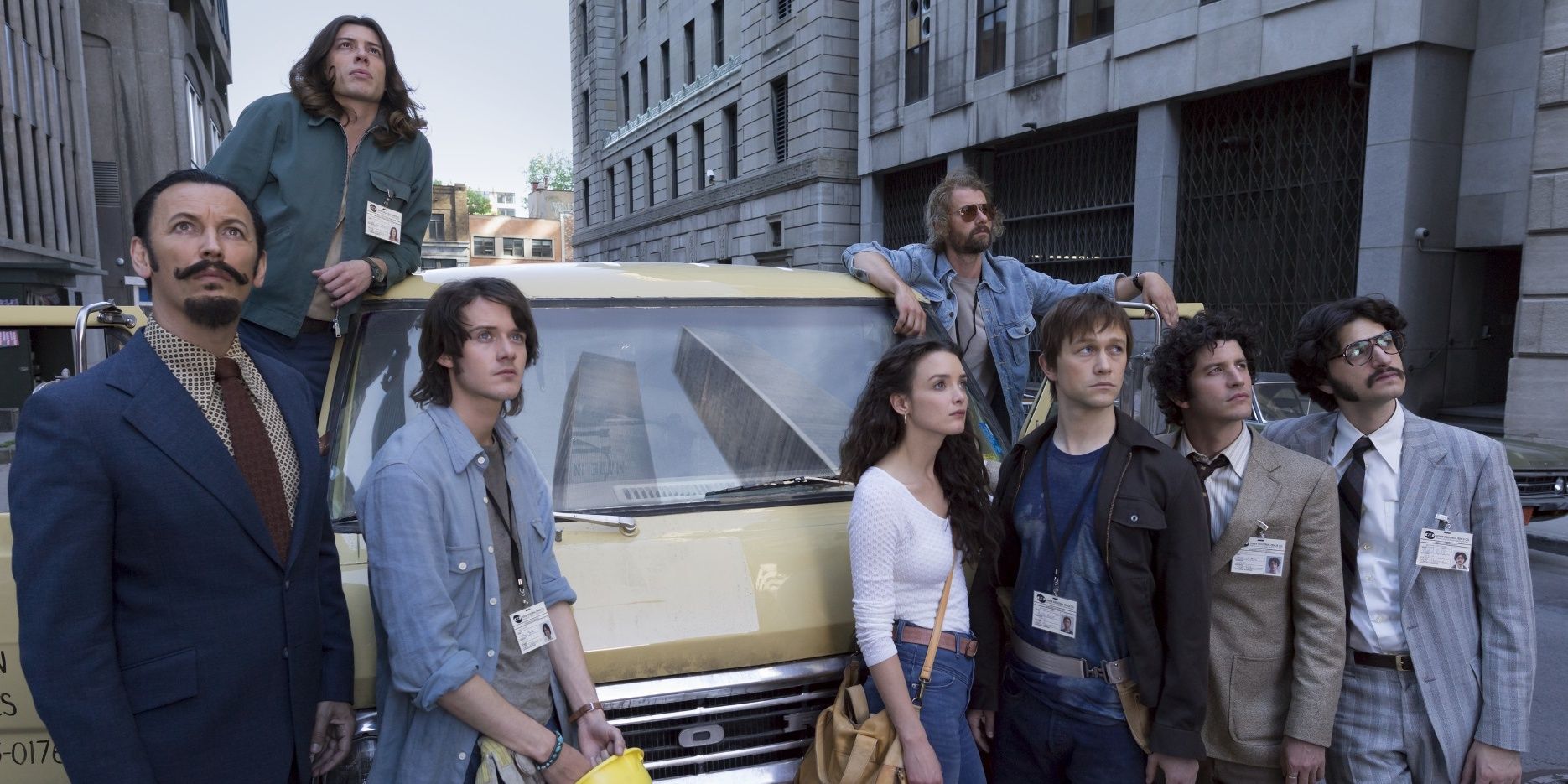The Big Picture
- The Walk is a visually stunning and psychologically thrilling film, but it induces nausea and anxiety in some viewers.
- Joseph Gordon-Levitt’s masterful performance immerses audiences in Philippe Petit’s high-wire experience.
- The vertigo-inducing effects in The Walk are reminiscent of Alfred Hitchcock’s Vertigo and other films known for inducing motion sickness.
Forget jump scares and gore — Robert Zemeckis‘ 2015 film The Walk has been described by some as the most nausea-inducing non-horror film ever made. Based on the incredible true story of Philippe Petit, a Frenchman who tightrope-walked between the twin towers of the World Trade Center of New York in 1974, this biopic has viewers clinging to their armrests harder than many horror villains could ever grip their nerves. Zemeckis throws audiences onto that thin wire with jaw-dropping visuals and vertigo-inducing effects. Viewers feel the swaying, the dizzying heights, the sheer madness of a man walking more than 100 stories above concrete. Reviews from critics were like medical reports, listing symptoms of nausea, sweating, and even fainting during screenings. But it’s not just the visuals that mess with viewers’ minds. Zemeckis crafts a psychological thriller, weaving in the pressure of pulling off an impossible stunt, the emotional journey that Petit undertook, and the sheer audacity of defying death. The IMAX 3D film is a cocktail of awe, anxiety, and a potent dose of “being up there” with Philippe. Joseph Gordon-Levitt‘s spectacular performance as Philippe Petit adds to the youthful daredevil spirit with his thrilling vulnerability. He makes you witness his every doubt, every triumph, every near miss — and feel it all in your guts.
The Walk
In 1974, high-wire artist Philippe Petit recruits a team of people to help him realize his dream: to walk the immense void between the World Trade Center towers.
- Release Date
- September 30, 2015
- Director
- Robert Zemeckis
- Runtime
- 123
- Studio
- Sony Pictures
What Is ‘The Walk’ About?
The Walk stars Joseph Gordon-Levitt as 24-year-old Philippe Petit, a man driven by a teenage dream to be the greatest wire-walker ever who eventually manages to fulfill the Twin Towers wire-walk on August 7th, 1974. Starting as a street performer in Paris, Philippe meets Papa Rudy (Ben Kingsley), a renowned wire-walker who becomes his mentor, and Annie Allix (Charlotte Le Bon) his love interest who throws her support behind his wild dream. He also gathers a team of other young Frenchmen to aid him, and after conquering the towers of Notre Dame Cathedral in Paris, they set off for the Twin Towers in New York. To successfully carry out the famous illegal walk, Philippe and his team must execute a heist-like plan, outsmarting security and overcoming numerous technical hurdles.
The Walk is a film that challenges the viewer about the possibilities of the human spirit with Philippe’s unflinching courage. Perhaps the only explanation for his deadly wire expeditions lies in his response during a Washington Post interview, where, at the age of 73, Philippe Petit performed yet another audacious stunt. In the interview, he said, “I’m not afraid of life. I’m not afraid of death.”
2:42

The John Wayne Movie That Likely Killed Dozens of People
The story of one of the most disastrous Hollywood productions.
Building upon the success of Man on Wire, the 2008 Oscar-winning documentary chronicling Philippe Petit’s Twin Towers heist and walk, The Walk takes a different approach. While Man on Wire relied on still photographs, re-enactments, and interviews to tell its award-winning story, in the making of The Walk, Gordon-Levitt walks on an actual wire 12 feet above the ground in a meticulously reconstructed sound studio set against a green screen, where some of the more challenging stunts were carried out by a double. This feat was made possible by Gordon-Levitt’s intensive eight-day training under the daredevil Philippe Petit himself, as he revealed in an interview with ABC News. The Walk‘s story is told through flashbacks with Gordon-Levitt narrating Philippe’s experience perched on the Statue of Liberty.
‘The Walk’ Gave Audiences Vertigo
Zemeckis, known for major films like Back to the Future, Forrest Gump, Cast Away, and Pinnochio (but we try to forget that last one), desired to immerse audiences into the film and give them a sense of vertigo, according to Business Insider. His goal viscerally hit the mark, with reports emerging of audience members experiencing nausea, anxiety, and even vomiting during screenings. As per The New York Post, moviegoers reported feeling sick. “The last 20 minutes of the film I had to look away a couple of times because of the sensation of the height. I felt a little bit queasy. I felt nervous. It was a tingling sensation and some anxiety,” said Denise Widman, board director of the Boston Jewish Film Festival after seeing the movie.
In The Walk, Zemeckis uses gut-gripping camera angles and spectacular computer-generated special effects to place the viewer right in Philippe’s shoes, seeing the streets of New York from his precarious perch up on the wire. He further intensifies the audience’s vertigo with dizzying camera movements, especially those showcasing the awe-inspiring height of the towers Philippe conquers in his “coup.”
Even surpassing the film’s technical wizardry is Joseph Gordon-Levitt’s masterful portrayal of Philippe Petit. Gordon-Levitt isn’t just playing a high-wire artist; he transforms into him, embodying the daredevil’s spirit with such meticulous detail that audiences are not just seeing him do it — they are walking every step alongside him. The audience shares with him the nervous anticipation in his hushed breaths, the surge of adrenaline in his trembling muscles, and the ecstatic triumph in his elated grin. Despite the foreknowledge of Philippe’s audacious success, Gordon-Levitt’s nuanced performance makes it a deeply personal journey, a testament to the “last sky poet’s” unwavering human spirit. Every hesitant step, every moment of intense concentration, the weight of the world balanced on a thin wire — they all engulf you, pulling you onto that dizzying precipice with him. So, when Philippe finally stretches out on the wire, a temporary god between the towers, it’s no surprise that some viewers’ stomachs churn. After all, you’ve been hanging right there with him the whole way.
The Vertigo Effect Originated With Alfred Hitchcock’s ‘Vertigo’
Alfred Hitchcock, the master of cinematic manipulation, stands tall as one of the most revolutionary directors. He invented the iconic freeze-frame in Champagne. He is renowned for his masterful use of suspense. He even birthed a slasher genre with Psycho. But his most haunting invention might be the vertigo-inducing “dolly zoom shot” (also referred to as “the vertigo shot”) immortalized in Vertigo. This potent tool was used by Hitchcock to amplify Jimmy Stewart‘s acrophobic protagonist’s terror. The shot finds a modern echo in Zemeckis’ The Walk. Like in Vertigo, in The Walk, the ever-changing camera angles and dizzying zooms mirror Philippe’s precarious tightrope walk, making the audience teeter alongside him on the edge of the sky.
However, The Walk isn’t the only cinematic tightrope walk leaving audiences woozy. Films like Steven Spielberg‘s Jaws perfected the use of shaky, underwater cinematography to induce genuine nausea and claustrophobia in viewers. Similarly, The Blair Witch Project‘s disorienting handheld-camera technique plunged audiences into the heart of terrorized woodland paranoia, with reports of motion sickness, dizziness, and even exits for fresh air. As per ABC News, the blockbuster Cloverfield, too, aimed for visceral impact, leaving some moviegoers feeling overwhelmed by the shaky, monster-hunting camerawork. As one viewer aptly put it, “I knew in the first 10 minutes I wasn’t going to last through the whole movie.” The movie theater company showing the film placed warnings like “Due to the filming method used for Cloverfield, guests viewing this film may experience side effects associated with motion sickness, similar to riding a roller coaster” outside auditoriums.
What Medical Experts Say About ‘The Walk’s Vertigo-Inducing Effects
In the wake of the dizzying reports, medical experts explained the phenomenon. As viewers donned 3D glasses, their brains struggled to reconcile the disconnect between the visual information of soaring heights and the static sensation of their seats. This sensory confusion triggered the body’s fight-or-flight response, mimicking the physical symptoms of real vertigo. “You have the illusion of motion while the body’s telling you that you’re not moving,” said ear surgeon Dr. Darius Kohan, per CBS News. “So the result is it feels like something is poisoned, so the reaction is gastrointestinal. You feel nauseous, dizzy,” he added. The Walk may have redefined cinematic realism, but for some viewers, it was a reality check on the limitations of their inner ear.
But is the nausea merely a gimmick, a cheap thrill? Not at all. It’s a visceral echo of Philippe’s audacity, a physical manifestation of the sheer impossibility of his feat. Zemeckis doesn’t just show us the danger of being 110 stories above the ground on a wire, he makes us feel it at our core, forging an intimacy with Philippe’s experience that transcends the screen. He makes us understand the primal fear that could have sent Joseph Gordon Levitt’s Philippe plummeting and the awe-inspiring will that kept him aloft. The nausea becomes a testament to the raw humanity of his achievement, and perhaps a reminder that the most daring acts start with a trembling heart and a churning gut.
So, to call The Walk “nausea-inducing” isn’t an insult, it’s a badge of honor. It’s a film that refuses to let you be a passive observer, flinging you headfirst into Philippe’s vertigo and forcing you to confront the exhilarating terror of existence on the edge. It’s a testament to the power of cinema to not just tell stories but to make you live them, sweat them, and maybe even throw up a little along the way. And in that visceral discomfort lies the true magic of The Walk — a reminder that sometimes, the greatest journeys start with the most unsettling first step.
The Walk is available to rent on Prime Video, Apple TV+, and YouTube in the U.S.
Rent on Prime Video





